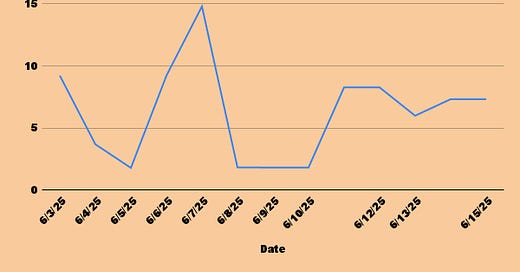I wrote about Algorand staking when it went live earlier this year. There are essentially three options: running a node, liquid staking, and RETI pools. All have various upsides/downsides.
Below are an explanation of those three methods and their upsides/downsides:
Running a node: This is the initial intention of the foundation. You can run a node from your computer with very limited technical requirements (a cheap mini-computer like the one I use as my home pc works just fine). If you propose blocks, you get paid fees plus a kicker from the Foundation. The downside? It’s still a bit technical, it can go down and need to be addressed, and you generally do need a computer dedicated toward running a node.
Liquid staking: Run through DeFI protocols such as Tinyman or Folks, you stake your Algorand through their portal and receive a liquid staking token (talgo on Tinyman) in return. The benefit of this is that you can then use that token to earn additional yield. So you make a lot more. A couple of downsides: it’s very hard to tell how much you’re really making with LST. Nothing tells you how much you’ve actually earned with the liquid token (it accrues value over time compared to the underlying algo token. And to participate in DeFI, you usually convert to another token like USDC, so you’re not as exposed to the underlying Algorand in a growth spurt.
RETI: It’s basically a bit more hands-off than running a node. You stake your algorand to one of the pools in the RETI pool on your wallet, and it earns yield without you needing to worry about running a node. The yields are the lowest of these three options though because you are paying a fee to the validator running the node pool.
(Now several large platforms are offering Algorand staking rewards, which offers an even more hands-off approach for presumably less yield yet. For those who are buy and hold on a centralized exchange people though, it’s perfect.)
I started out with liquid staking since I use most of my Algorand for DeFI. But I experimented with switching to RETI pool.
While the technology is wonderful, RETI yields were lower than I expected. The number of Algorand I earned varied a lot. I averaged about 6.2 algorand per day, but they ranged from 14 to 1.8 algorand. Payouts are essentially once per day, I noticed.
Considering I was staking a bit over 49,000 Algorand, that’s about 4.6% yield.
Contrast that to liquid staking, which earns me 7-8% in daily rewards, not including the pool fees (which could bring it to more like 14%) while also earning staking rewards (I just have no idea how much exactly).
While I like the transparency of RETI pools - you know exactly how much you’re making on a given day - it’s obviously a much better bet to use liquid staking and LP farming. (NOTE: I use USDC/TAlgo - stablecoin pairs offer the best price stability I found from doing a nearly year-long DeFI experiment.) Better, I estimate by a factor of six at least.
What should you do? A lot of it will depend on your level of comfort with crypto protocols. While I think Algorand has some of the most user-friendly protocols in all of crypto, it can still be pretty intimidating for folks.
Be sure to check out
Remember the FrugalBC YouTube channel livestreams nearly every Friday at 12:15 pm CST. Come join us! In addition, FrugalBC is on Twitter/X and Kick.
Want to maximize your safety in crypto? Check out Ledger:
Non-Fungible Domains: Turn your long complicated wallet address into an easy to remember .algo address for a one-time, affordable fee.
MARCUS: Follow the memecoin and NFT project based on Marcus Aurelius (in this case, Marcus Furrelius) built on the Algorand blockchain.





